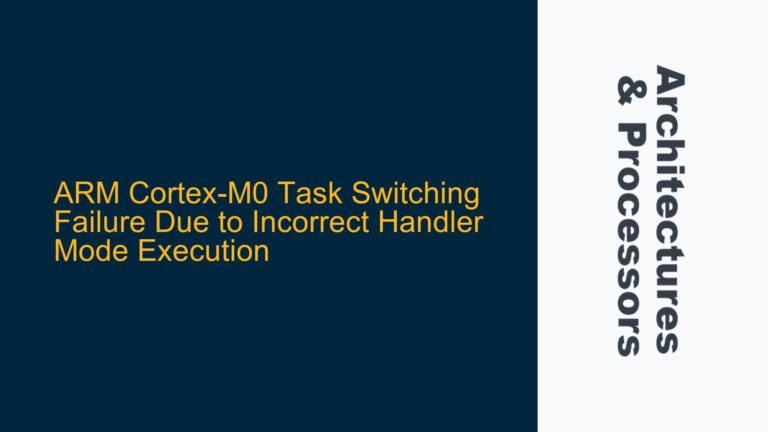Understanding AXI-5 User Loopback Signaling in ARM Architectures
The AXI-5 protocol, an evolution of the Advanced eXtensible Interface (AXI) specification, introduces several enhancements to improve performance, scalability, and flexibility in ARM-based systems. One of the notable additions is the User Loopback Signaling mechanism, which includes signals such as AWLOOP, BLOOP, ARLOOP, and RLOOP. These signals are designed to streamline transaction management and improve the efficiency of data transfers in complex System-on-Chip (SoC) designs.
At its core, User Loopback Signaling allows an agent issuing requests to store transaction-related information in an indexed table. This indexed table can then be referenced during the response phase, enabling faster and more efficient transaction tracking compared to traditional methods that rely solely on transaction IDs (AxID). The primary advantage of this mechanism is its ability to decouple transaction tracking from the AxID, which can often lead to complications when multiple transactions share the same ID for ordering purposes.
In ARM-based systems, where performance and resource optimization are critical, the User Loopback Signaling mechanism provides a robust solution for managing high-throughput data transfers. By leveraging indexed tables, system designers can reduce the complexity of transaction matching, minimize latency, and improve overall system performance. This is particularly beneficial in scenarios involving multiple masters and slaves, where transaction ordering and tracking can become a bottleneck.
The use of User Loopback Signaling is not limited to a specific type of ARM core or application. It can be applied across a wide range of ARM architectures, from Cortex-M series microcontrollers to Cortex-A series application processors. The flexibility and scalability of this mechanism make it a valuable tool for optimizing data transfer operations in both embedded systems and high-performance computing environments.
Challenges in Implementing User Loopback Signaling: Memory Management and Transaction Tracking
While the User Loopback Signaling mechanism offers significant advantages, its implementation is not without challenges. One of the primary issues is the efficient management of the indexed table used to store transaction-related information. The table must be designed to handle a high volume of transactions while ensuring fast and reliable access to stored data. This requires careful consideration of memory allocation, indexing strategies, and data synchronization.
Another challenge is ensuring the correct mapping of loopback signals to transaction tracking entries. Since the loopback signals (AWLOOP, BLOOP, ARLOOP, and RLOOP) are used to reference the indexed table, any mismatch or error in mapping can lead to incorrect transaction handling. This is particularly critical in systems where multiple transactions are issued concurrently, as the risk of misalignment between requests and responses increases.
Additionally, the use of User Loopback Signaling introduces new timing considerations. The indexed table must be updated and accessed within strict timing constraints to avoid delays in transaction processing. This requires precise coordination between the request and response phases, as well as efficient handling of potential conflicts or race conditions.
In ARM architectures, where real-time performance and deterministic behavior are often required, these challenges can have a significant impact on system reliability and efficiency. Addressing them requires a deep understanding of the AXI-5 protocol, as well as the specific requirements and constraints of the target ARM core and application.
Optimizing User Loopback Signaling: Best Practices and Implementation Strategies
To overcome the challenges associated with User Loopback Signaling, several best practices and implementation strategies can be employed. These strategies focus on optimizing memory management, ensuring accurate transaction tracking, and maintaining tight timing control.
Memory Management Optimization:
The indexed table used for storing transaction-related information should be implemented in a way that balances speed and resource utilization. One effective approach is to use a dedicated memory block with a fixed-size entry for each transaction. This allows for fast and predictable access to the table, reducing the risk of delays or bottlenecks. Additionally, the use of hardware acceleration, such as DMA (Direct Memory Access) controllers, can further enhance the efficiency of memory operations.
Accurate Transaction Tracking:
To ensure the correct mapping of loopback signals to transaction tracking entries, a robust indexing mechanism should be implemented. This mechanism should be designed to handle concurrent transactions and avoid conflicts or overlaps. One common approach is to use a unique identifier for each transaction, which is then used as an index into the table. This identifier can be derived from the loopback signals, ensuring a direct and unambiguous mapping between requests and responses.
Timing Control and Synchronization:
Maintaining tight timing control is critical for the successful implementation of User Loopback Signaling. This can be achieved through the use of synchronization mechanisms, such as barriers or semaphores, to coordinate access to the indexed table. Additionally, the use of pipelining and parallel processing techniques can help to minimize latency and improve overall system performance. In ARM architectures, where real-time performance is often a key requirement, these techniques can be particularly effective in ensuring deterministic behavior.
Testing and Validation:
Finally, thorough testing and validation are essential to ensure the correct implementation of User Loopback Signaling. This includes both functional testing, to verify that the mechanism operates as intended, and performance testing, to identify and address any potential bottlenecks or inefficiencies. In ARM-based systems, where reliability and performance are critical, this step is particularly important to ensure that the system meets its design goals and requirements.
In conclusion, the AXI-5 User Loopback Signaling mechanism offers significant advantages for optimizing transaction management in ARM architectures. However, its successful implementation requires careful consideration of memory management, transaction tracking, and timing control. By following best practices and employing effective implementation strategies, system designers can leverage this powerful tool to enhance the performance and efficiency of their ARM-based systems.






